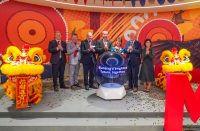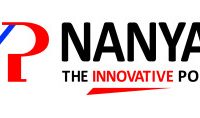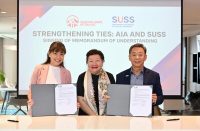As defined by UNESCO, holistic education is a learning approach tailored around activating all aspects of an individual’s personality so that they can have a more effective and comprehensive learning experience. As its end goal, holistic education seeks to mold confident and well-rounded individuals who can productively contribute to the community. The aspects of our personality that holistic learning aims to touch are the intellect, imagination, body, and emotion.
At its core, holistic education aims to help students become their best selves in more ways than just getting stellar grades. Holistic learning emphasizes respect and empathy towards others, all while retaining focus on the learner’s social, cognitive, and emotional well-being. As such, this integrated system of learning is among the most favoured by institutions that seek to produce conscientious and globally competitive learners for the modern world.
To understand the concept of holistic learning further, here are some of its characteristics and the reasons why it may help set your child up for a bright future in Singapore and beyond.
Interdisciplinary and Multifaceted
One of the core features of a holistic curriculum is its multifacetedness and interdisciplinary nature. Teachers abiding by a holistic approach seek to interweave literacy and mathematical concepts with other activities that may pique children’s interests. For example, a teacher might introduce fractions to a class through baking or cooking, or they might help students develop their language skills by learning about other cultures.
A curriculum based on holistic approaches also believes that music, arts, and sports are just as important as “academic” subjects like languages, the sciences, mathematics, and history. Institutions like Stamford American International School Singapore (SAIS), one of the premier international schools in the city-state, believe in the value of arts and athleticism in the holistic development of a child. For its part SAIS invests heavily in facilities and resources that give children an avenue for their interests, be it amenities for the drama club, the school band, the swim team, or any other extra-curricular activity.
Inquiry-Based
Children are naturally curious, and a holistic learning framework aims to strengthen this inherent curiosity. Rather than passively giving out instructions, teachers tend to encourage students to learn through self-directed inquiry. This approach motivates students to discover, investigate, and use the scientific method to answer questions both old and new. The main focus of this framework is to build genuine knowledge through student initiative along with adequate instructor guidance.
On a related note, inquiry-based learning is one of the key features of the International Baccalaureate (IB) Diploma Programme. Created in Switzerland in the 1960s, the IB Programme was intended to provide a balanced approach to education ahead of the student’s exit from secondary school. The IB Programme fosters curiosity and the need to ask questions across disciplines. Students that are graduates of this program often come equipped with future-ready skills as well as a strong proclivity for lifelong learning. In addition, it has been reported that the IB Programme cultivates critical thinking and research skills, global awareness, intercultural appreciation, and the capacity for collaborative work—all of which are necessary for students to succeed in the real, globalized world of today.
Social-Emotional
A person’s social and emotional outlook is largely defined by early childhood development. Essentially, this means that a child learns about the world through their emotions and interactions with others. Holistic learning builds on this by focusing on the child’s socio-emotional needs. This objective may manifest in activities such as meditation exercises, reading breaks, and classroom games.
Aside from fostering school-based relationships, a holistic learning framework also aims to establish the same level of trust and partnership at home. The holistic model supports the formation of a healthy home learning environment, often encouraging the parent or caregiver to take part in the child’s educational activities. For example, teachers may ask their students to keep a journal of weekly science experiments or create a family tree with the assistance of a parent or an older family member.
Centered around the Global Community
Another characteristic of a holistic learning approach is its inclusiveness and respect for diversity. Holistic education recognises the importance of community and aims to teach students to value and care for each of their own communities. This can be through tackling environmental issues, addressing inequality, challenging the culture of bullying, and other ways to positively impact a broad spectrum of socioeconomic realities.
Additionally, a holistic learning system pays attention to cultural differences. Children are taught to recognise the vast array of cultures that must be respected and understood in all their nuances. Promoting cultural sensitivity will help prepare students for their future interactions with people from around the world and from backgrounds that are different from their own.
Culture-focused learning may cover introductions to unique customs, celebrations, and observances such as the Japanese tea ceremony, the Hindu Diwali festival, and the Muslim religious holiday of Ramadan. Other examples include allowing students to take more than one language as an elective, or scheduling a “show and tell” activity centred around foreign nations or family traditions rooted in culture.
An Educational Approach Suited for the 21st Century
With its focus on all facets of an individual’s development, it’s clear that a holistic learning framework is one of the most effective in producing well-rounded, empathic, and self-assured citizens of the world. The truth is, the old approach based on one-dimensional, passive instruction is not enough in an increasingly interconnected world. To be ready for the future, 21st-century students may need a more modern, progressive approach—one that places their inherent potential and developmental needs above all.




